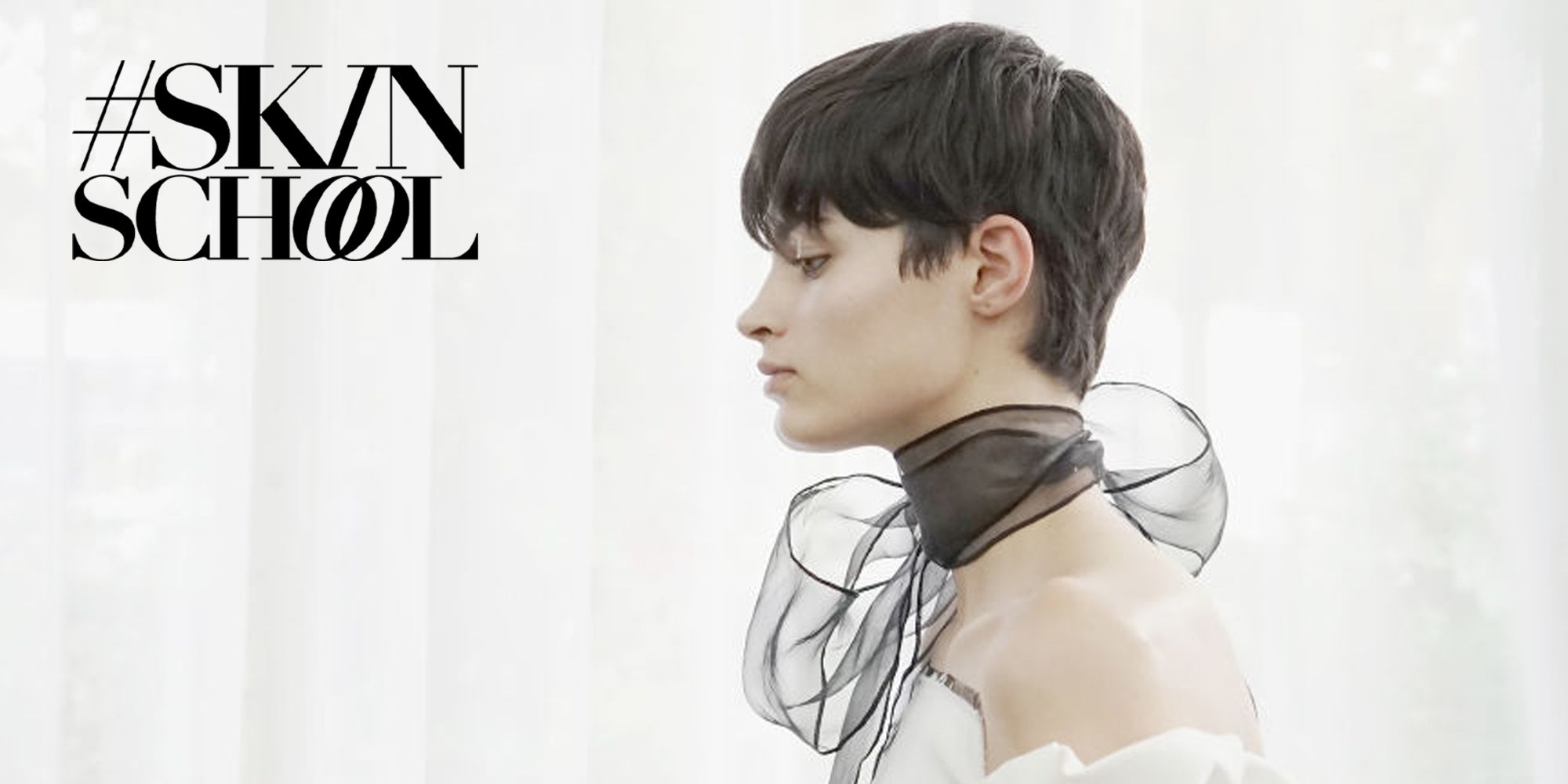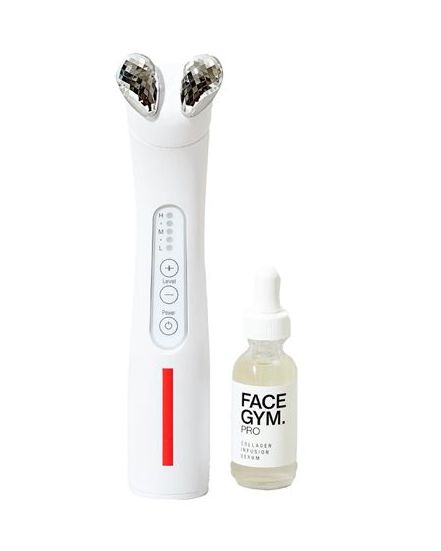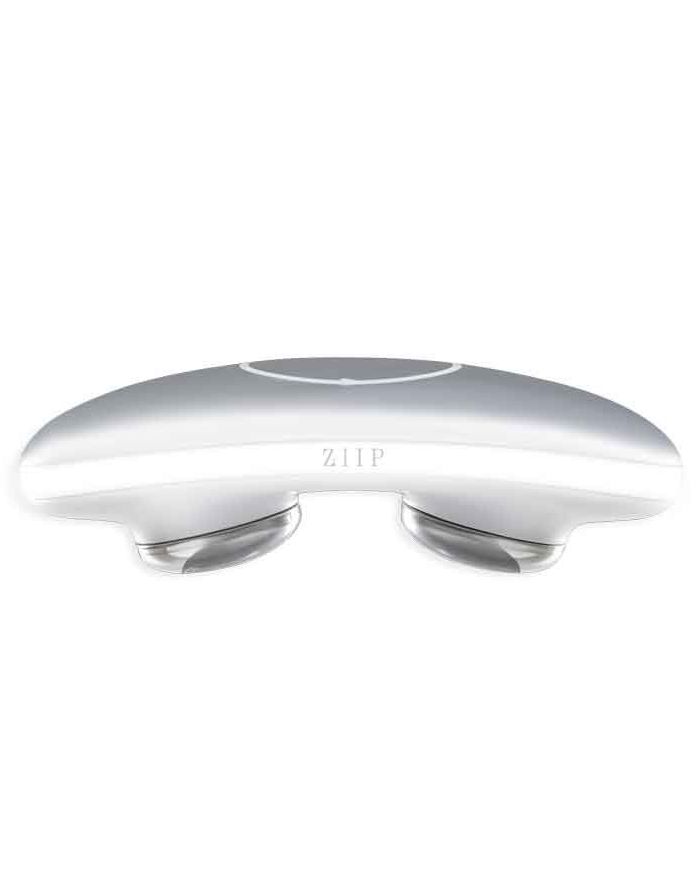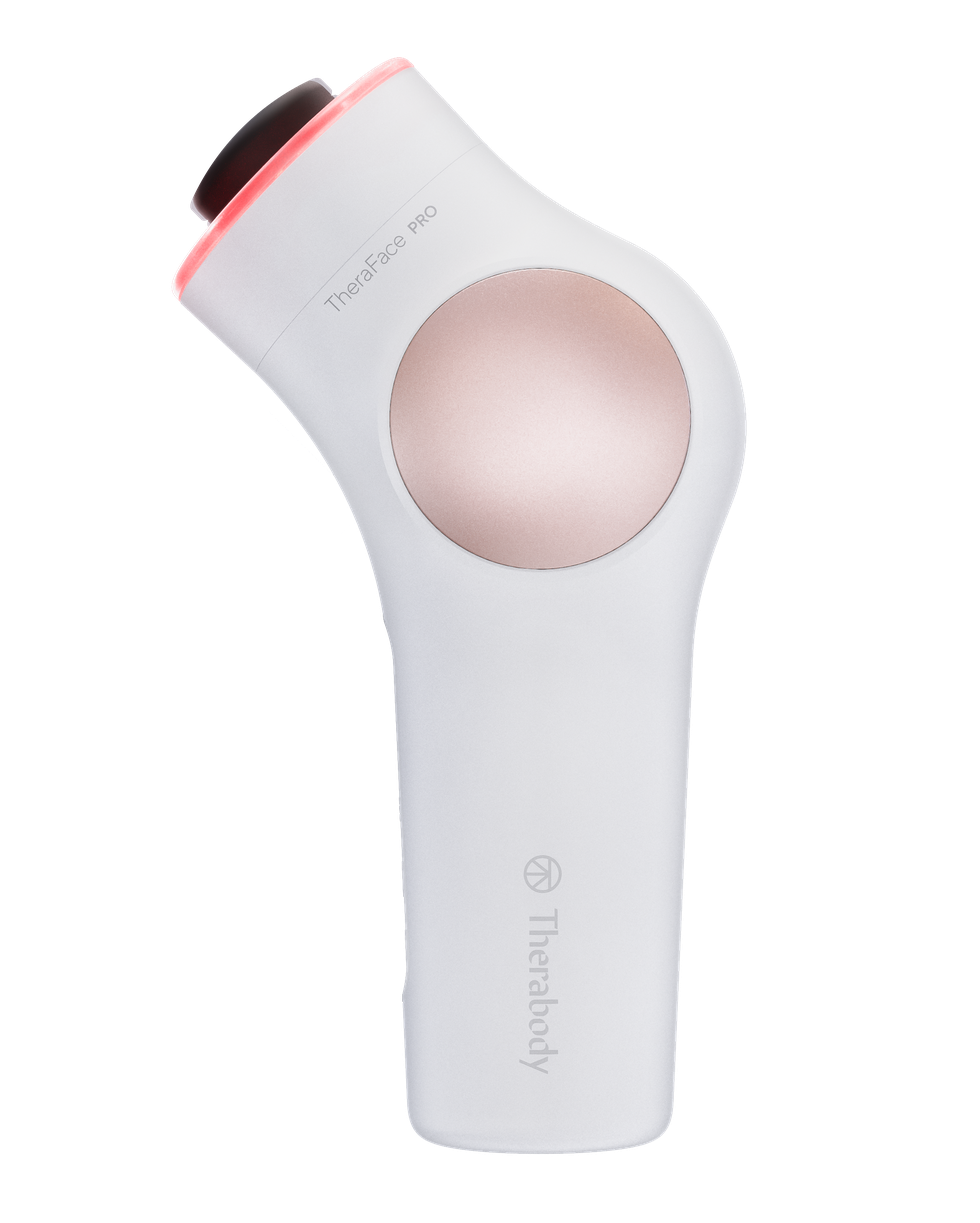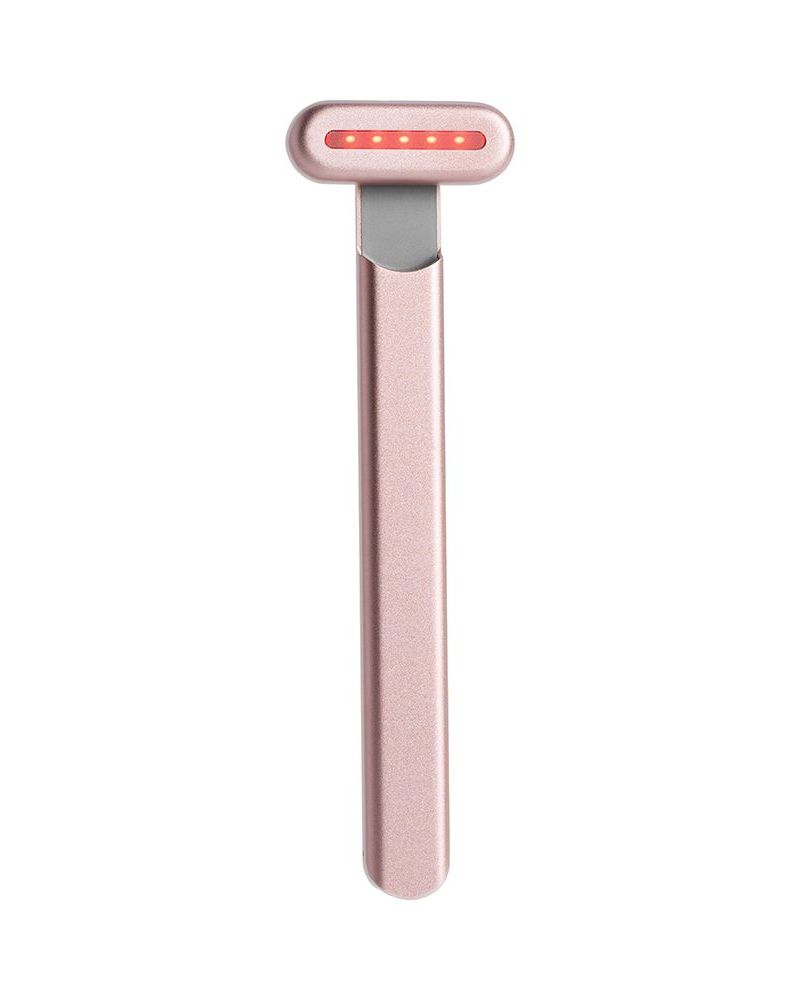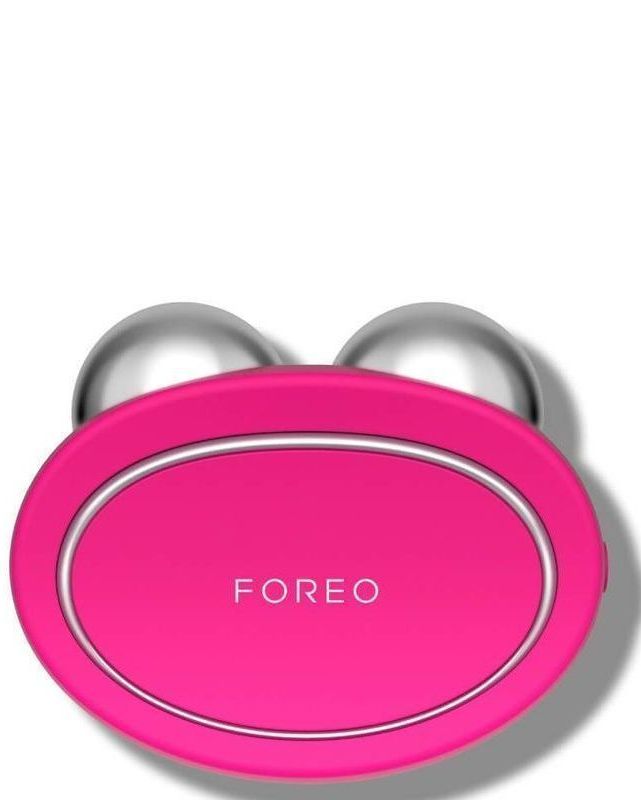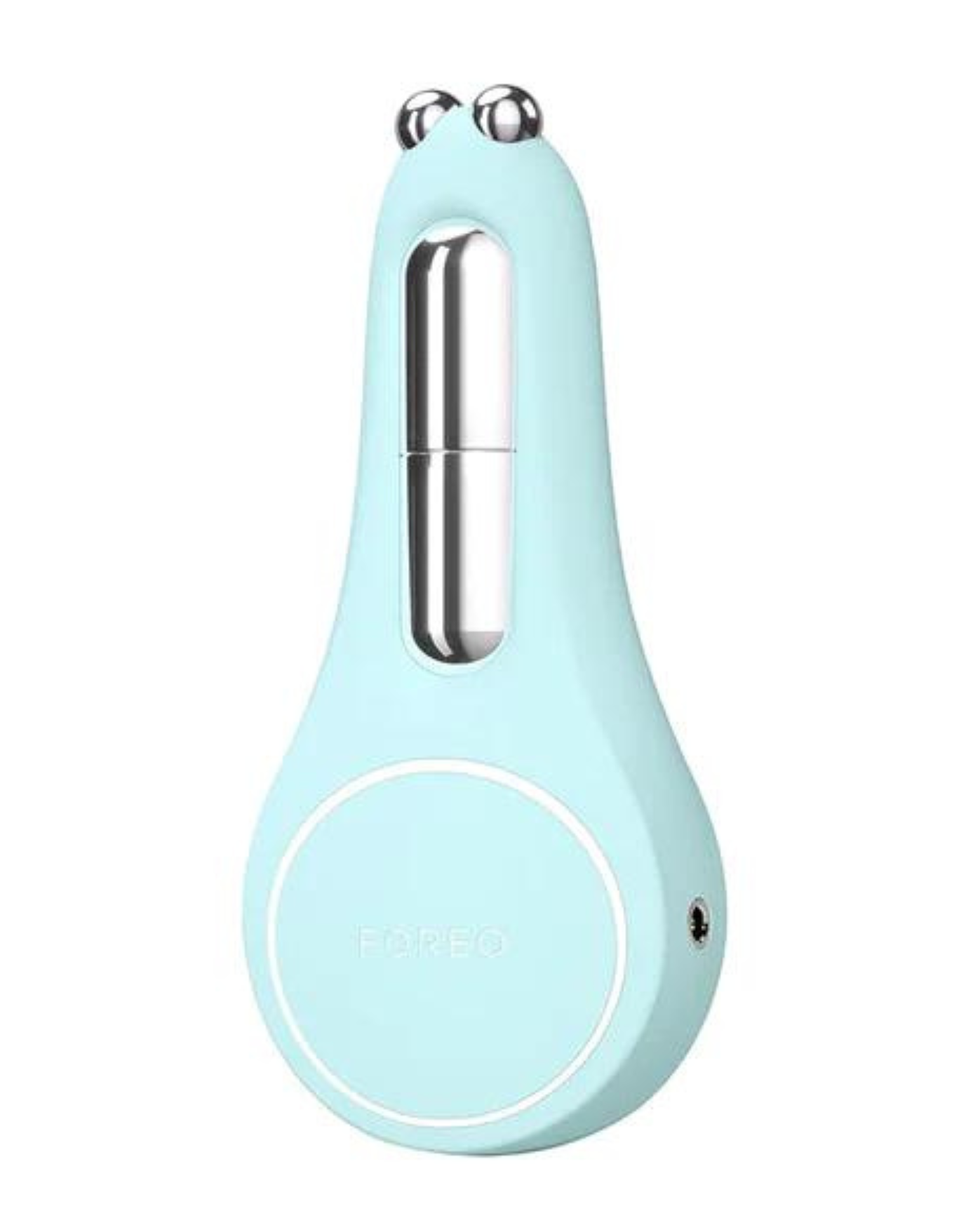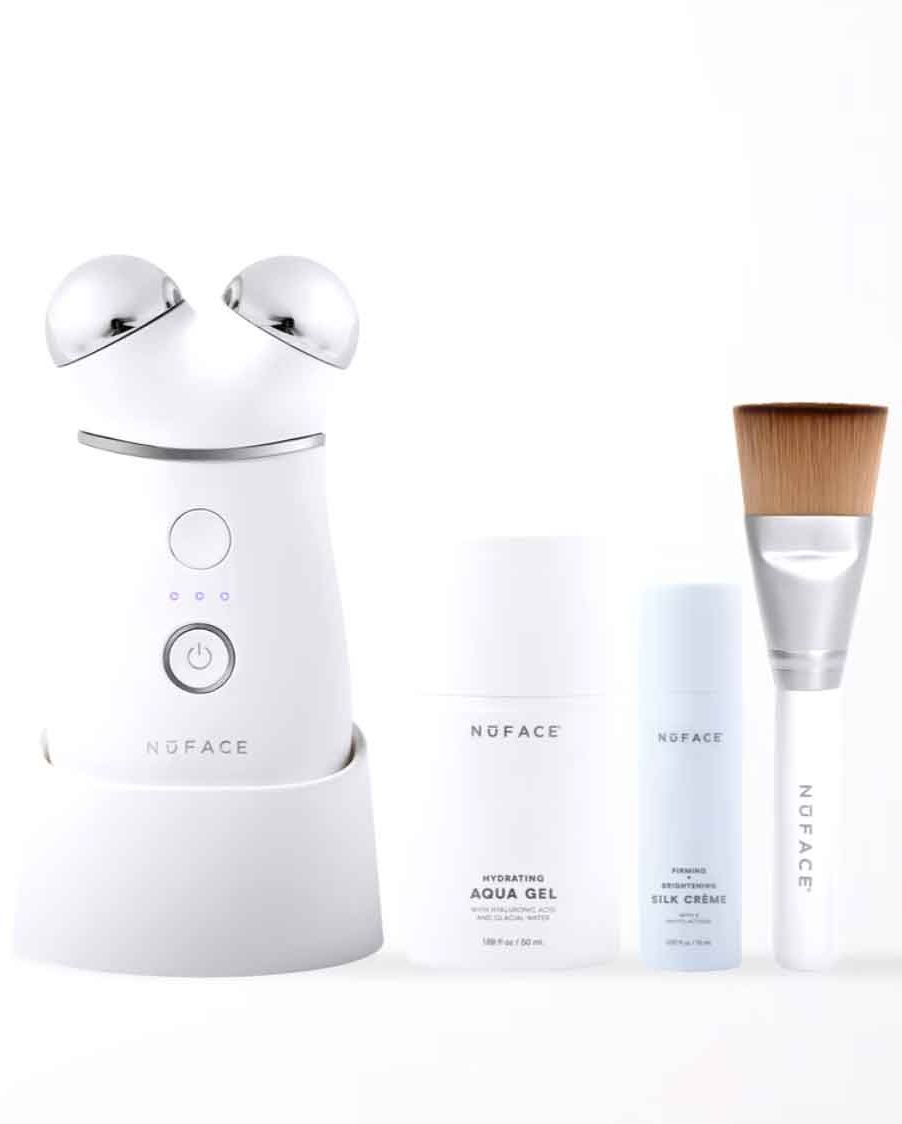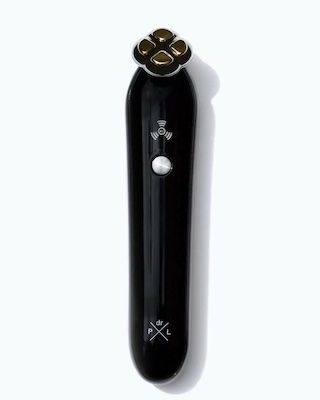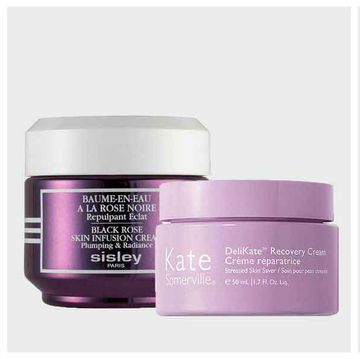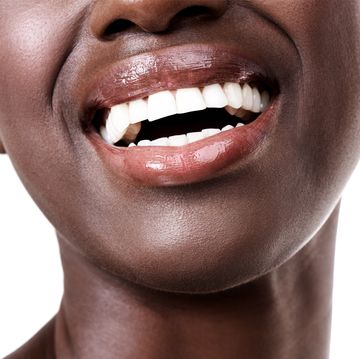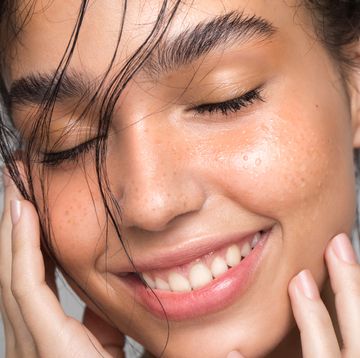Jump to:
- What is microcurrent?
- How does microcurrent work?
- What are the benefits of microcurrent?
- Are microcurrent facials safe?
- Does microcurrent hurt?
- In-salon facials vs at-home devices
- Microcurrent or nanocurrent?
- How to use a microcurrent device at home
- The best at-home microcurrent facial devices
- Microcurrent devices: The Bazaar Verdict
Anyone willing to forego pampering in favour of performance is likely already familiar with the face-firming powers of a microcurrent facial. Like LED light therapy, microneedling and radiofrequency, there’s little spa-like appeal to be found this non-invasive treatment, yet the results can be good enough to have you hooked for life.
A quick Google of microcurrent facials will throw up the kind of ‘before and after’ images that demand a double take: truly, the muscle-toning prowess of these high-tech devices is clear to see – even at a distance. The lifting effects have even drawn swathes of people away from the Botox needle and loosened the lure of fillers.
But what actually is microcurrent – and should we be applying it to our faces? Here, the experts reveal everything you need to know, from how the technology works to the best at-home microcurrent devices to try.
What is microcurrent?
Microcurrent was actually first used in the 1980s as a treatment to stimulate muscles in people with conditions such as Bell’s Palsy. Once the face-lifting side effects were made apparent, it didn’t take long for the beauty industry to catch on, and microcurrent facials have been rising in popularity ever since.
“Microcurrent is essentially very low levels of electrical current,” explains facialist Abigail James. “It’s not unlike the body’s own bio-electrical field, making it fantastic for use within facials.”
How does microcurrent work?
The electrical current runs between the positive and negatively charged conductors (in salon devices, it’s usually long, slender rods, whereas at-home devices tend to feature more user-friendly spheres). When both are in contact with your skin, the current flows through the muscles, training them to tone up. So, they're not actually working on the skin, but rather the muscle beneath.
“The process involves re-educating the muscles: 32 of them, in fact,” says James. However, it isn’t actually the low-intensity microcurrent that does this alone. “Such a minute amount is used, that it’s not capable of manipulating the muscles by itself, which is why probes – or sometimes electric gloves, which are amazing for hands-on lifting and product penetration – are used. The probes physically move the muscles into the correct position: this is the process known as re-education,” she says.
What are the benefits of microcurrent?
As the mild electrical pulses stimulate your facial muscles, they create a more toned and lifted appearance – just like a sculpting gym workout for your face. The benefits are both immediate and cumulative, which is what keeps many people hooked. However, this isn’t the only reason to get to grips with microcurrent.
“Microcurrent’s main benefits go far beyond that of just a lift: it also boosts circulation, enhances penetration of skincare products, and stimulates collagen and elastin production," says James. "It even stimulates ATP (adenosine triphosphate), which is essentially muscle energy: it’s responsible for a number of key processes, such as photosynthesis, muscle re-education, and protein synthesis,” says James.
Are microcurrent facials safe?
According to James, it’s “perfectly safe and effective to start having microcurrent facials in your twenties and continue throughout your adult life.” However, there are a few people who should give it a miss.
“If you have epilepsy, are diabetic or pregnant, or have heart issues (such as a pacemaker fitted), microcurrent facials would not be suitable,” says James. “Likewise, if you have chronic acne, microcurrent may stimulate the inflammation you have. However, a small spot here or there can be fine.”
Does microcurrent hurt?
Microcurrent isn't a painful experience. However, clinic treatments vary in intensity, and at the higher end of the scale you may feel a tingling sensation, along with the occasional 'jump' as the current runs through the muscle. At-home toning devices use a lower electrical charge, so you shouldn't feel any discomfort at all.
In-salon facials vs at-home devices
Microcurrent’s in-clinic popularity has inevitably led to the emergence of at-home devices, and today, there are several impressive options on the market. However, as with most at-home tools, there are marked differences between your in-salon microcurrent facial and an at-home alternative.
As James explains, the differences lie in the strength of current and wavelengths. “They vary dramatically: some professional machines have a variety of wavelengths which give them more target as well as strength. Some also read the amount of energy your skin needs, so the treatment is more tailored. Also, you can gradually increase the strength in the clinic as you work through a treatment course.”
As all at-home microcurrent tools work on a much lower charge than in-salon machinery, the results require persistence. But while it will take longer, you can now achieve results similar to an in-clinic course at home. Chris Luckham, Education Specialist at Foreo recommends a three-to-six minute treatment every day for the first two weeks, then top-ups three times per week thereon.
Microcurrent or nanocurrent?
As technology advances, manufacturers are exploring the benefits of nanocurrent alongside traditional microcurrent. Industry leader ZIIP is the name to know here: its new Halo device employs both wavelengths in tandem to deliver both instant and cumulative results.
As co-founder David Mason explains, the two technologies deliver different benefits in the skin. “Nanocurrent is a much lower electrical current, more in sync with the human body,” he explains. “Microcurrent waveforms can really hit down to the muscle and sculpt and lift, while nanocurrent waveforms are more surface-level, prompting collagen and elastic production. We use both: this is what we call our Dual Waveform Technology.” Essentially, nanocurrent works by stimulating production of ATP, which can be thought of as the body’s chemical ‘battery’. “ATP is what the body uses to create many things, including collagen and elastin. So the more nanocurrent treatments you do, the more ATP production, and the more long-term firming effects you're going to see from it,” says Mason.
How to use a microcurrent device at home
Of course, at-home microcurrent devices come with rules for safe and efficient use, and you mustn’t be tempted to dive straight in at the deep end.
“As with anything new, you want to introduce a microcurrent device slowly into your routine for the long run, as opposed to going for a one-time treatment. Starting with a lower intensity and building up will give you more time to feel comfortable with the whole process and will be less of a ‘shock’ figuratively to the skin," says Luckham.
Secondly, it’s vital to prep your skin correctly before using your device. Skin must be thoroughly cleansed with an oil-free cleanser, (we recommend a gel formula) and be left completely free from product residue. “This is because oils actually act as a barrier to the electrical current,” says Luckham.
Once your skin is suitably prepped, it’s essential to apply your conductive gel. “Without this, the microcurrent has no gateway to the deeper layers (your muscles).” Furthermore, it’s important to use a specially formulated gel for use with microcurrent devices, as these are guaranteed to be water-based and entirely free from oils. Without using a gel, your device will simply ‘prick’ the skin, rather than travelling into the muscles, rendering it useless.
The best at-home microcurrent facial devices
When it comes to at-home microcurrent devices, skin-tech brand Nuface has dominated for several years now. Still one of the best to try, its classic Trinity toning device features three intensity settings, so you can slowly work your way up. To target specific fine lines around the eyes and lips, the brand’s smaller Fix device is ideal.
Skin-tech leader Foreo has entered the market with its Bear device. Extremely user-friendly, it’s the perfect choice for anyone new to microcurrent. The device links up with the brand's straight-forward app, which guides you through each one of your three-minute treatments. The body is made from hygienic silicone, which means it can be washed after each use, and the five intensity settings allow you to gradually work your way up.
Taking things a step further is the innovative Facegym, which offers a practical microcurrent wand designed to mimic the remarkable lifting effects of its cult face 'workouts'. The Facegym Pro delivers current on a deeper level than other devices, offering maximum results. What's more, the small faceted metal tips make it ideal for working on those smaller areas: think under the eyebrows and jawline.
For something that offers more than a quick lift, look to the newly launched ZIIP Halo, which boasts both microcurrent and nanocurrent. This advanced device links up with a slick smartphone app to guide you through a host of different treatments to firm, define and even clarify acne.
Microcurrent devices: The Bazaar Verdict
While the science may stack up seamlessly, you may want a little anecdotal approval before investing in your own microcurrent device. Personally, I’ve been road-testing the ZIIP Halo for six months now, and have to admit, the results are clearly visible. The device is painless and easy to use (although I did lament having to swap out my balmy Augustinus Bader cleanser) and – unlike many other techy devices – results are satisfyingly rapid. I'm also the proud owner of an extremely temperamental complexion: my skin flares in hot rooms, and on sight of an acid-based product, and I've experienced no adverse reactions to my microcurrent sessions.
While I wouldn’t agree the results are dramatic enough to rival Botox (despite what some brands may claim) there is no denying the instant lift a good at-home device can deliver. I find the improvements most noticeable around my hooded eyes, while I know friends who swear by their microcurrent tools for defining and sculpting their cheekbones. While the results are indeed cumulative, it's the instant post-treatment lift that has me reaching for mine before every big event.
